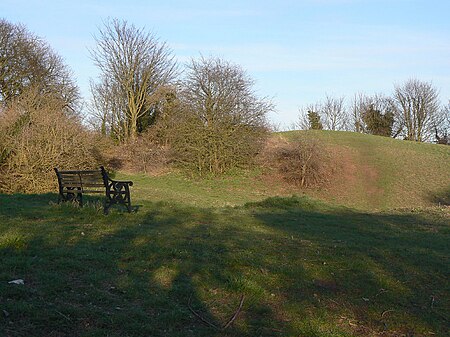Owston Ferry Castle
Castles in LincolnshireEngland castle stubsLocal Nature Reserves in Lincolnshire

Owston Ferry Castle (also known as Kinnard's Ferry Castle) was in the village of Owston Ferry, some 12 kilometres (7 mi) to the north of Gainsborough, Lincolnshire. It is thought that the original castle on this site was erected soon after the Norman Conquest but that it was dismantled in 1095. It was rebuilt in 1173 by Roger de Mowbray to support Prince Henry in the conflict with his father Henry II who subsequently had the castle destroyed.The site of the motte remains as a broad grassy mound. The surrounding area is now a Local Nature Reserve.
Excerpt from the Wikipedia article Owston Ferry Castle (License: CC BY-SA 3.0, Authors, Images).Owston Ferry Castle
East Lound Road,
Geographical coordinates (GPS) Address Nearby Places Show on map
Geographical coordinates (GPS)
| Latitude | Longitude |
|---|---|
| N 53.4923 ° | E -0.7866 ° |
Address
East Lound Road
DN9 2LU
England, United Kingdom
Open on Google Maps










